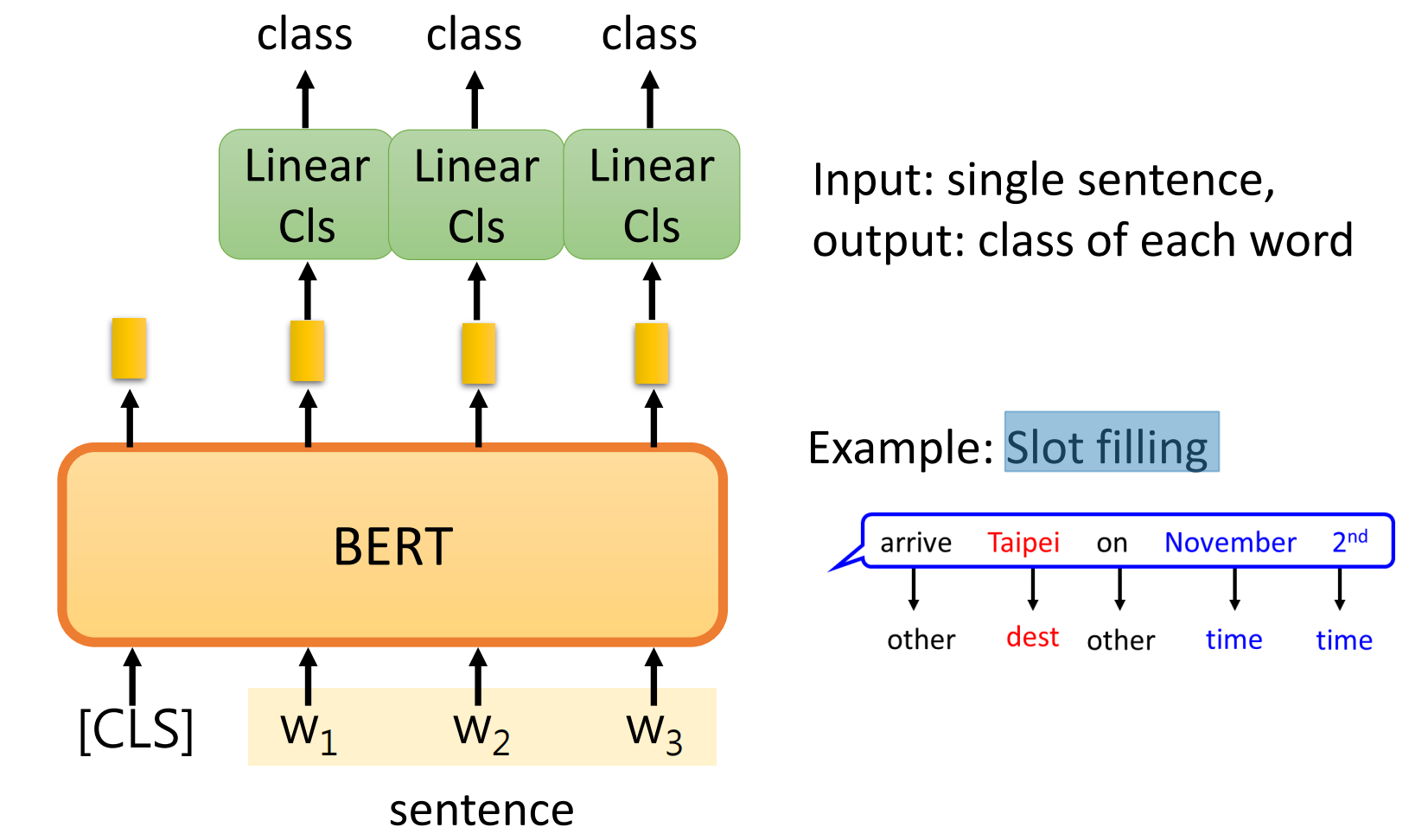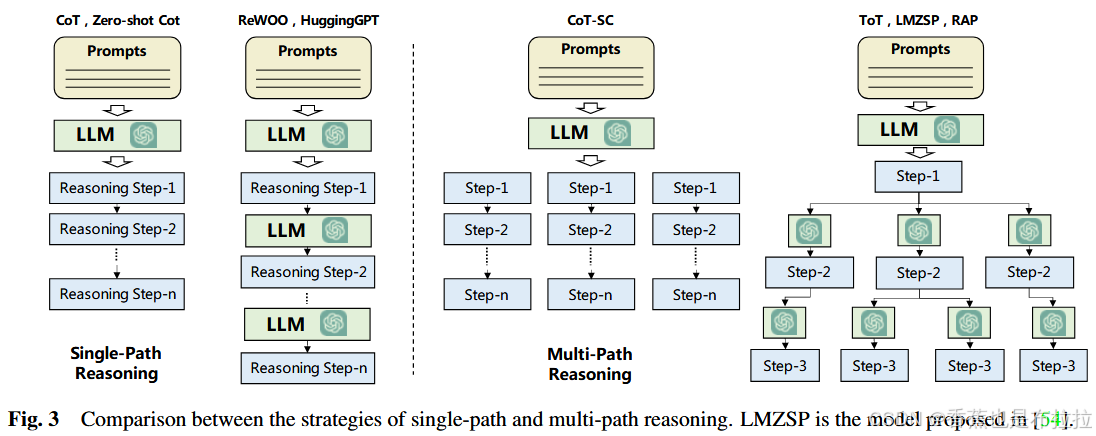目录结构
注:提前言明 本文借鉴了以下博主、书籍或网站的内容,其列表如下:
1、参考书籍:《PostgreSQL数据库内核分析》
2、参考书籍:《数据库事务处理的艺术:事务管理与并发控制》
3、PostgreSQL数据库仓库链接,点击前往
4、日本著名PostgreSQL数据库专家 铃木启修 网站主页,点击前往
5、参考书籍:《PostgreSQL指南:内幕探索》,点击前往
6、参考书籍:《事务处理 概念与技术》
7、auto_explain pg官方手册在线文档,点击前往
8、auto_explain 中文手册在线文档,点击前往
1、本文内容全部来源于开源社区 GitHub和以上博主的贡献,本文也免费开源(可能会存在问题,评论区等待大佬们的指正)
2、本文目的:开源共享 抛砖引玉 一起学习
3、本文不提供任何资源 不存在任何交易 与任何组织和机构无关
4、大家可以根据需要自行 复制粘贴以及作为其他个人用途,但是不允许转载 不允许商用 (写作不易,还请见谅 💖)
5、本文内容基于PostgreSQL master源码开发而成
auto_explain — log execution plans of slow queries
- 文章快速说明索引
- 功能实现背景说明
- 功能实现源码解析

文章快速说明索引
学习目标:
做数据库内核开发久了就会有一种 少年得志,年少轻狂 的错觉,然鹅细细一品觉得自己其实不算特别优秀 远远没有达到自己想要的。也许光鲜的表面掩盖了空洞的内在,每每想到于此,皆有夜半临渊如履薄冰之感。为了睡上几个踏实觉,即日起 暂缓其他基于PostgreSQL数据库的兼容功能开发,近段时间 将着重于学习分享Postgres的基础知识和实践内幕。
学习内容:(详见目录)
1、auto_explain — log execution plans of slow queries
学习时间:
2024年10月20日 16:20:13
学习产出:
1、PostgreSQL数据库基础知识回顾 1个
2、CSDN 技术博客 1篇
3、PostgreSQL数据库内核深入学习
注:下面我们所有的学习环境是Centos8+PostgreSQL master +Oracle19C+MySQL8.0
postgres=# select version();
version
------------------------------------------------------------------------------------------------------------
PostgreSQL 18devel on x86_64-pc-linux-gnu, compiled by gcc (GCC) 8.5.0 20210514 (Red Hat 8.5.0-21), 64-bit
(1 row)
postgres=#
#-----------------------------------------------------------------------------#
SQL> select * from v$version;
BANNER Oracle Database 19c EE Extreme Perf Release 19.0.0.0.0 - Production
BANNER_FULL Oracle Database 19c EE Extreme Perf Release 19.0.0.0.0 - Production Version 19.17.0.0.0
BANNER_LEGACY Oracle Database 19c EE Extreme Perf Release 19.0.0.0.0 - Production
CON_ID 0
#-----------------------------------------------------------------------------#
mysql> select version();
+-----------+
| version() |
+-----------+
| 8.0.27 |
+-----------+
1 row in set (0.06 sec)
mysql>
功能实现背景说明
当我们向 PostgreSQL 发送一个 SQL 语句时,该语句的执行方式如下图所示:

当使用 EXPLAIN 命令时,PostgreSQL 仅返回估计执行计划,即优化器认为对提供的 SQL 语句最有效的执行计划 (该语句并未真正执行)。另一方面,如果我们运行 EXPLAIN ANALYZE (PostgreSQL 会运行该语句),因此我们将获得实际执行计划,其中还包含执行计划中每个操作的时间信息。但是在调查生产系统上的慢速查询时,我们可能会面临几个挑战:
- 出于安全原因,我们可能不被允许在生产系统上运行查询,因此,在这种情况下,我们不能简单地运行 EXPLAIN ANALYZE 命令来获取实际执行计划
- 即使我们有权运行 EXPLAIN ANALYZE 命令,我们也可能会观察到与客户抱怨的计划不同的计划
auto_explain模块提供了一种方式来自动记录慢速语句的执行计划,而不需要手工运行EXPLAIN。这在大型应用中追踪未被优化的查询时有用。
该模块没有提供 SQL 可访问的函数。要使用它,简单地将它载入服务器。你可以把它载入到一个单独的会话:
LOAD 'auto_explain';
你必须作为超级用户来这样做。更典型的用法是通过在postgresql.conf的session_preload_libraries或shared_preload_libraries参数中包括auto_explain将它预先载入到某些或者所有会话中。然后你就可以追踪那些出乎意料地慢的查询,而不管它们何时发生。当然为此会付出一些额外的负荷作为代价。
上面是官方文档的描述,但是通常情况下使用它有更明显的原因:
您想知道 PostgreSQL 查询为什么很慢吗?那么
EXPLAIN ANALYZE是一个很好的起点。正如上面所说,查询可能依赖于其他服务器活动,可能需要一段时间才能运行,并且可能会随时间而变化。
因此,分析慢查询的更好解决方案是获取 PostgreSQL 在运行相关查询时使用的实际执行计划。
于是,如果您想查看最慢查询的实际执行计划,auto_explain就是您需要的工具。
在本人的数据库内核开发中auto_explain的使用非常多 但是从来没有深入看一下其源码实现。接下来 我们将研究它的作用、如何配置它,如何使用这些日志来加快查询速度,以及它的源码解析。
它的使用和配置都非常简单,官方文档和其他人的博客都已经介绍地很详细,我这里不再赘述。直接上干货:

该插件代码非常简单,只有auto_explain.c编出的动态库 因此只需加载即可使用!
功能实现源码解析
原理上分为两部分:GUC和HOOK 如下:
// contrib/auto_explain/auto_explain.c
/*
* Module load callback
*/
void
_PG_init(void)
{
/* Define custom GUC variables. */
...
MarkGUCPrefixReserved("auto_explain");
/* Install hooks. */
prev_ExecutorStart = ExecutorStart_hook;
ExecutorStart_hook = explain_ExecutorStart;
prev_ExecutorRun = ExecutorRun_hook;
ExecutorRun_hook = explain_ExecutorRun;
prev_ExecutorFinish = ExecutorFinish_hook;
ExecutorFinish_hook = explain_ExecutorFinish;
prev_ExecutorEnd = ExecutorEnd_hook;
ExecutorEnd_hook = explain_ExecutorEnd;
}
| 参数 | PostgreSQL 默认值 | 建议设置(根据需要) |
|---|---|---|
| auto_explain.log_min_duration | -1 | 100 |
| auto_explain.log_parameter_max_length | -1 | -1 |
| auto_explain.log_analyze | Off | On |
| auto_explain.log_timing | On (with log_analyze) | On |
| auto_explain.log_buffers | Off | On |
| auto_explain.log_verbose | Off | On |
| auto_explain.log_triggers | Off | Off |
| auto_explain.log_nested_statements | Off | Off |
| auto_explain.log_settings (v12) | Off | Off |
| auto_explain.log_wal (v13) | Off | Off |
| auto_explain.log_format | TEXT | JSON |
| auto_explain.log_level | LOG | LOG |
| auto_explain.sample_rate | 1 | 1 |
这些参数的作用不再赘述 根据需要自行设置即可。接下看一下相关HOOK,如下:
ExecutorStart_hook
A hook called at the beginning of any execution of any query plan
ExecutorStart_hook is a hook which is called at the beginning of any execution of any query plan.
ExecutorStart_hook was added in PostgreSQL 8.4.
ExecutorRun_hook
A hook which is called at any plan execution, after ExecutorStart
ExecutorRun_hook is a hook which is called at any plan execution, after ExecutorStart.
ExecutorRun_hook was added in PostgreSQL 8.4.
ExecutorFinish_hook
A hook called after the last ExecutorRun call
ExecutorFinish_hook is a hook which is called after the last ExecutorRun call.
ExecutorFinish_hook was added in PostgreSQL 9.1.
ExecutorEnd_hook
A hook which is called at the end of execution of any query plan
ExecutorEnd_hook is a hook which is called at the end of execution of any query plan.
ExecutorEnd_hook was added in PostgreSQL 8.4.
若是有小伙伴对其他HOOK感兴趣,可以看一下本人之前的博客:
- PostgreSQL的学习心得和知识总结(八十六)|深入理解PostgreSQL数据库HOOK技术及开源hooks文档介绍,点击前往
这段时间偶然看到了HashData的一篇博客,里面扼要地介绍了执行器的操作流程,如下:
在数据库内核层面,执行器的操作流程可以概括为四个关键阶段,它们依次是:
ExecutorStart、ExecutorRun、ExecutorFinish和ExecutorEnd。这四个阶段在执行器和算子之间建立了紧密的关联,并各自扮演着不同的角色。

注:对此感兴趣的小伙伴可以看一下这篇博客:
- PostgreSQL技术内幕(十六)如何写一个执行器算子?
一、
ExecutorStart:主要负责初始化各个算子的状态。以SQL语句select * from table order by i limit 2;为例:
- ExecutorStart会首先创建一个包含所有执行所需信息的执行器状态(Estate)
- 随后,通过InitPlan来初始化Plan State树,为接下来的执行做好准备。在这个过程中,ExecInitNode函数发挥着关键作用,它根据节点的类型(如limit、sort或scan)进行相应的初始化操作。这个过程是层层递进的,确保每个节点或算子的信息和私有状态都被正确设置。
// src/backend/executor/execMain.c
/* ----------------------------------------------------------------
* ExecutorStart
*
* This routine must be called at the beginning of any execution of any
* query plan
* 任何查询计划执行开始时都必须调用此例程
*
* Takes a QueryDesc previously created by CreateQueryDesc (which is separate
* only because some places use QueryDescs for utility commands). The tupDesc
* field of the QueryDesc is filled in to describe the tuples that will be
* returned, and the internal fields (estate and planstate) are set up.
* 采用先前由 CreateQueryDesc 创建的 QueryDesc(之所以单独创建,是因为有些地方使用 QueryDesc 作为实用程序命令)。
* QueryDesc 的 tupDesc 字段被填充以描述将返回的元组,并且内部字段(estate 和 planstate)被设置。
*
* eflags contains flag bits as described in executor.h.
*
* NB: the CurrentMemoryContext when this is called will become the parent
* of the per-query context used for this Executor invocation.
* 注意:调用此方法时,CurrentMemoryContext 将成为此 Executor 调用所使用的每个查询上下文的父级。
*
* We provide a function hook variable that lets loadable plugins
* get control when ExecutorStart is called. Such a plugin would
* normally call standard_ExecutorStart().
* 我们提供了一个函数钩子变量,让可加载插件在调用 ExecutorStart 时获得控制权。
* 这样的插件通常会调用 standard_ExecutorStart()。
*
* ----------------------------------------------------------------
*/
void
ExecutorStart(QueryDesc *queryDesc, int eflags)
{
/*
* In some cases (e.g. an EXECUTE statement or an execute message with the
* extended query protocol) the query_id won't be reported, so do it now.
*
* Note that it's harmless to report the query_id multiple times, as the
* call will be ignored if the top level query_id has already been
* reported.
*/
pgstat_report_query_id(queryDesc->plannedstmt->queryId, false);
if (ExecutorStart_hook)
(*ExecutorStart_hook) (queryDesc, eflags);
else
standard_ExecutorStart(queryDesc, eflags);
}
void
standard_ExecutorStart(QueryDesc *queryDesc, int eflags)
{
...
/*
* Build EState, switch into per-query memory context for startup.
*/
estate = CreateExecutorState();
queryDesc->estate = estate;
...
/*
* Initialize the plan state tree
*/
InitPlan(queryDesc, eflags);
...
}
详细如下:

然后看一下这里的钩子函数,如下:
/*
* ExecutorStart hook: start up logging if needed
*/
static void
explain_ExecutorStart(QueryDesc *queryDesc, int eflags)
{
/*
* At the beginning of each top-level statement, decide whether we'll
* sample this statement. If nested-statement explaining is enabled,
* either all nested statements will be explained or none will.
* 在每个顶级语句的开头,决定是否要对此语句进行采样。
* 如果启用了嵌套语句解释,则将解释所有嵌套语句,或者不解释任何嵌套语句。
*
* When in a parallel worker, we should do nothing, which we can implement
* cheaply by pretending we decided not to sample the current statement.
* If EXPLAIN is active in the parent session, data will be collected and
* reported back to the parent, and it's no business of ours to interfere.
* 在并行工作进程中,我们不应该做任何事情,我们可以通过假装决定不对当前语句进行采样来廉价地实现这一点。
* 如果 EXPLAIN 在父会话中处于活动状态,则将收集数据并报告回父会话,我们无权干涉。
*/
if (nesting_level == 0)
{
if (auto_explain_log_min_duration >= 0 && !IsParallelWorker())
current_query_sampled = (pg_prng_double(&pg_global_prng_state) < auto_explain_sample_rate); // 这块决定是否要采样
else
current_query_sampled = false;
}
if (auto_explain_enabled())
{
/* Enable per-node instrumentation iff log_analyze is required. */
// 当且仅当需要 log_analyze 时,才启用每个节点的检测。
if (auto_explain_log_analyze && (eflags & EXEC_FLAG_EXPLAIN_ONLY) == 0)
{
if (auto_explain_log_timing)
queryDesc->instrument_options |= INSTRUMENT_TIMER;
else
queryDesc->instrument_options |= INSTRUMENT_ROWS;
if (auto_explain_log_buffers)
queryDesc->instrument_options |= INSTRUMENT_BUFFERS;
if (auto_explain_log_wal)
queryDesc->instrument_options |= INSTRUMENT_WAL;
}
}
if (prev_ExecutorStart)
prev_ExecutorStart(queryDesc, eflags);
else
standard_ExecutorStart(queryDesc, eflags);
if (auto_explain_enabled())
{
/*
* Set up to track total elapsed time in ExecutorRun. Make sure the
* space is allocated in the per-query context so it will go away at
* ExecutorEnd.
* 设置以跟踪 ExecutorRun 中的总耗时。
* 确保在每个查询上下文中分配空间,以便它在 ExecutorEnd 时消失。
*/
if (queryDesc->totaltime == NULL)
{
MemoryContext oldcxt;
oldcxt = MemoryContextSwitchTo(queryDesc->estate->es_query_cxt);
queryDesc->totaltime = InstrAlloc(1, INSTRUMENT_ALL, false);
MemoryContextSwitchTo(oldcxt);
}
}
}
#define auto_explain_enabled() \
(auto_explain_log_min_duration >= 0 && \
(nesting_level == 0 || auto_explain_log_nested_statements) && \
current_query_sampled)
小结一下上面函数的处理逻辑:
- 决定是否要采样
- 我们这里默认 auto_explain_enabled 是开启的,那么当启用auto_explain_log_analyze时,才启用每个节点的检测
- 执行其他HOOK或标准ExecutorStart
- #3 完成之后,设置跟踪 ExecutorRun 中的总耗时
注意第4步中的INSTRUMENT_ALL,如下:
// src/include/executor/instrument.h
/* Flag bits included in InstrAlloc's instrument_options bitmask */
typedef enum InstrumentOption
{
INSTRUMENT_TIMER = 1 << 0, /* needs timer (and row counts) */
INSTRUMENT_BUFFERS = 1 << 1, /* needs buffer usage */
INSTRUMENT_ROWS = 1 << 2, /* needs row count */
INSTRUMENT_WAL = 1 << 3, /* needs WAL usage */
INSTRUMENT_ALL = PG_INT32_MAX
} InstrumentOption;
二、
ExecutorRun:初始化完成后,执行器进入运行阶段,通过ExecutorRun来实现算子的运行。此阶段类似于一个外循环,不断从下游获取数据,直到数据全部处理完毕。这个过程主要是通过调用不同的访问方法来执行的,每个访问方法都对应一个函数指针。在初始化阶段,这些函数指针已被设置好,并在运行阶段被调用。
/* ----------------------------------------------------------------
* ExecutorRun
*
* This is the main routine of the executor module. It accepts
* the query descriptor from the traffic cop and executes the
* query plan.
*
* ExecutorStart must have been called already.
*
* If direction is NoMovementScanDirection then nothing is done
* except to start up/shut down the destination. Otherwise,
* we retrieve up to 'count' tuples in the specified direction.
* 如果方向为 NoMovementScanDirection,则除了启动/关闭目的地外不执行任何操作。
* 否则,我们将在指定方向上检索最多“count”个元组。
*
* Note: count = 0 is interpreted as no portal limit, i.e., run to
* completion. Also note that the count limit is only applied to
* retrieved tuples, not for instance to those inserted/updated/deleted
* by a ModifyTable plan node.
* 注意:count = 0 表示没有入口限制,即运行至完成。
* 还请注意,计数限制仅适用于检索到的元组,而不适用于由修改表计划节点插入/更新/删除的元组。
*
* There is no return value, but output tuples (if any) are sent to
* the destination receiver specified in the QueryDesc; and the number
* of tuples processed at the top level can be found in
* estate->es_processed. The total number of tuples processed in all
* the ExecutorRun calls can be found in estate->es_total_processed.
* 没有返回值,但输出元组(如果有)会发送到 QueryDesc 中指定的目标接收器;
* 并且可以在 estate->es_processed 中找到在顶层处理的元组数量。
* 可以在 estate->es_total_processed 中找到在所有 ExecutorRun 调用中处理的元组总数。
*
* We provide a function hook variable that lets loadable plugins
* get control when ExecutorRun is called. Such a plugin would
* normally call standard_ExecutorRun().
* 我们提供了一个函数钩子变量,让可加载插件在调用 ExecutorRun 时获得控制权。
* 这样的插件通常会调用 standard_ExecutorRun()。
*
* ----------------------------------------------------------------
*/
void
ExecutorRun(QueryDesc *queryDesc,
ScanDirection direction, uint64 count,
bool execute_once)
{
if (ExecutorRun_hook)
(*ExecutorRun_hook) (queryDesc, direction, count, execute_once);
else
standard_ExecutorRun(queryDesc, direction, count, execute_once);
}
void
standard_ExecutorRun(QueryDesc *queryDesc,
ScanDirection direction, uint64 count, bool execute_once)
{
...
/* Allow instrumentation of Executor overall runtime */
if (queryDesc->totaltime)
InstrStartNode(queryDesc->totaltime); // 记录开始时刻的
...
sendTuples = (operation == CMD_SELECT ||
queryDesc->plannedstmt->hasReturning);
if (sendTuples)
dest->rStartup(dest, operation, queryDesc->tupDesc);
...
/*
* run plan
*/
if (!ScanDirectionIsNoMovement(direction))
{
if (execute_once && queryDesc->already_executed)
elog(ERROR, "can't re-execute query flagged for single execution");
queryDesc->already_executed = true;
ExecutePlan(estate,
queryDesc->planstate,
queryDesc->plannedstmt->parallelModeNeeded,
operation,
sendTuples,
count,
direction,
dest,
execute_once);
}
...
/*
* shutdown tuple receiver, if we started it
*/
if (sendTuples)
dest->rShutdown(dest);
if (queryDesc->totaltime)
InstrStopNode(queryDesc->totaltime, estate->es_processed); // diff上面 记录差值
...
}
注1:关于上面sendTuples这块的这里不再赘述,有兴趣的小伙伴可以去去查看一下本人之前的博客:
- PostgreSQL的学习心得和知识总结(一百四十四)|深入理解PostgreSQL数据库之sendTuples的实现原理及功能修改,点击前往
注2:上面真正的核心ExecutePlan函数的处理(循环直到我们处理完计划中适当数量的元组。),如下所示:

接下来看一下此处的钩子函数,如下:
/*
* ExecutorRun hook: all we need do is track nesting depth
*/
static void
explain_ExecutorRun(QueryDesc *queryDesc, ScanDirection direction,
uint64 count, bool execute_once)
{
nesting_level++;
PG_TRY();
{
if (prev_ExecutorRun)
prev_ExecutorRun(queryDesc, direction, count, execute_once);
else
standard_ExecutorRun(queryDesc, direction, count, execute_once);
}
PG_FINALLY();
{
nesting_level--;
}
PG_END_TRY();
}
这里比较简单:仅需要做的就是跟踪嵌套深度。
三、
ExecutorFinish:为确保信息的完整性和后续分析的便利性,在ExecutorRun和ExecutorEnd之间,特别引入了ExecutorFinish阶段。在ExecutorFinish阶段,执行器会进行一些统计信息的收集、时间的记录以及相关的清理工作。
/* ----------------------------------------------------------------
* ExecutorFinish
*
* This routine must be called after the last ExecutorRun call.
* It performs cleanup such as firing AFTER triggers. It is
* separate from ExecutorEnd because EXPLAIN ANALYZE needs to
* include these actions in the total runtime.
* 此例程必须在最后一次 ExecutorRun 调用之后调用。
* 它执行清理工作,例如触发 AFTER 触发器。
* 它与 ExecutorEnd 是分开的,因为 EXPLAIN ANALYZE 需要将这些操作包含在总运行时中。
*
* We provide a function hook variable that lets loadable plugins
* get control when ExecutorFinish is called. Such a plugin would
* normally call standard_ExecutorFinish().
*
* ----------------------------------------------------------------
*/
void
ExecutorFinish(QueryDesc *queryDesc)
{
if (ExecutorFinish_hook)
(*ExecutorFinish_hook) (queryDesc);
else
standard_ExecutorFinish(queryDesc);
}
void
standard_ExecutorFinish(QueryDesc *queryDesc)
{
EState *estate;
MemoryContext oldcontext;
/* sanity checks */
Assert(queryDesc != NULL);
estate = queryDesc->estate;
Assert(estate != NULL);
Assert(!(estate->es_top_eflags & EXEC_FLAG_EXPLAIN_ONLY));
/* This should be run once and only once per Executor instance */
Assert(!estate->es_finished);
/* Switch into per-query memory context */
oldcontext = MemoryContextSwitchTo(estate->es_query_cxt);
/* Allow instrumentation of Executor overall runtime */
if (queryDesc->totaltime)
InstrStartNode(queryDesc->totaltime);
/* Run ModifyTable nodes to completion */
// 运行完修改表节点
ExecPostprocessPlan(estate);
/* Execute queued AFTER triggers, unless told not to */
// 执行排队的 AFTER 触发器,除非被告知不要执行
if (!(estate->es_top_eflags & EXEC_FLAG_SKIP_TRIGGERS))
AfterTriggerEndQuery(estate);
if (queryDesc->totaltime)
InstrStopNode(queryDesc->totaltime, 0);
MemoryContextSwitchTo(oldcontext);
estate->es_finished = true;
}
和上面一样,ExecutorFinish 钩子:同样仅需要做的就是跟踪嵌套深度。
四、
ExecutorEnd:执行器ExecutorEnd阶段,负责逐层结束下游节点的执行。这个过程是通过调用每个节点的结束函数(endplan)来实现的,该函数会识别到具体的节点类型,并调用相应的结束方法。在结束过程中,执行器会销毁每个节点的状态信息,释放资源。
/* ----------------------------------------------------------------
* ExecutorEnd
*
* This routine must be called at the end of execution of any
* query plan
* 必须在任何查询计划执行结束时调用此例程
*
* We provide a function hook variable that lets loadable plugins
* get control when ExecutorEnd is called. Such a plugin would
* normally call standard_ExecutorEnd().
*
* ----------------------------------------------------------------
*/
void
ExecutorEnd(QueryDesc *queryDesc)
{
if (ExecutorEnd_hook)
(*ExecutorEnd_hook) (queryDesc);
else
standard_ExecutorEnd(queryDesc);
}
void
standard_ExecutorEnd(QueryDesc *queryDesc)
{
EState *estate;
MemoryContext oldcontext;
/* sanity checks */
Assert(queryDesc != NULL);
estate = queryDesc->estate;
Assert(estate != NULL);
/*
* Check that ExecutorFinish was called, unless in EXPLAIN-only mode. This
* Assert is needed because ExecutorFinish is new as of 9.1, and callers
* might forget to call it.
*/
Assert(estate->es_finished ||
(estate->es_top_eflags & EXEC_FLAG_EXPLAIN_ONLY));
/*
* Switch into per-query memory context to run ExecEndPlan
*/
oldcontext = MemoryContextSwitchTo(estate->es_query_cxt);
ExecEndPlan(queryDesc->planstate, estate);
/* do away with our snapshots */
UnregisterSnapshot(estate->es_snapshot);
UnregisterSnapshot(estate->es_crosscheck_snapshot);
/*
* Must switch out of context before destroying it
*/
MemoryContextSwitchTo(oldcontext);
/*
* Release EState and per-query memory context. This should release
* everything the executor has allocated.
*/
FreeExecutorState(estate);
/* Reset queryDesc fields that no longer point to anything */
queryDesc->tupDesc = NULL;
queryDesc->estate = NULL;
queryDesc->planstate = NULL;
queryDesc->totaltime = NULL;
}
以上面SQL为例,我们调试一下这里:
postgres=# \d+ t1
Table "public.t1"
Column | Type | Collation | Nullable | Default | Storage | Compression | Stats target | Description
--------+---------+-----------+----------+---------+---------+-------------+--------------+-------------
id | integer | | | | plain | | |
Access method: heap
postgres=#
postgres=# explain (analyze, verbose)select * from t1 order by id limit 2;
QUERY PLAN
----------------------------------------------------------------------------------------------------------------------
Limit (cost=25.00..25.01 rows=2 width=4) (actual time=0.200..0.201 rows=2 loops=1)
Output: id
-> Sort (cost=25.00..27.50 rows=1000 width=4) (actual time=0.199..0.200 rows=2 loops=1)
Output: id
Sort Key: t1.id
Sort Method: top-N heapsort Memory: 25kB
-> Seq Scan on public.t1 (cost=0.00..15.00 rows=1000 width=4) (actual time=0.012..0.105 rows=1000 loops=1)
Output: id
Planning Time: 0.057 ms
Execution Time: 0.213 ms
(10 rows)
postgres=#
下面是ExecutorStart阶段:
ExecInitSeqScan(SeqScan * node, EState * estate, int eflags)
ExecInitNode(Plan * node, EState * estate, int eflags)
ExecInitSort(Sort * node, EState * estate, int eflags)
ExecInitNode(Plan * node, EState * estate, int eflags)
ExecInitLimit(Limit * node, EState * estate, int eflags)
ExecInitNode(Plan * node, EState * estate, int eflags)
InitPlan(QueryDesc * queryDesc, int eflags)
standard_ExecutorStart(QueryDesc * queryDesc, int eflags)
ExecutorStart(QueryDesc * queryDesc, int eflags)
PortalStart(Portal portal, ParamListInfo params, int eflags, Snapshot snapshot)
exec_simple_query(const char * query_string)
...
下面是ExecutorRun阶段:
ExecSeqScan(PlanState * pstate)
ExecProcNodeFirst(PlanState * node)
ExecProcNode(PlanState * node)
ExecSort(PlanState * pstate)
ExecProcNodeFirst(PlanState * node)
ExecProcNode(PlanState * node)
ExecLimit(PlanState * pstate)
ExecProcNodeFirst(PlanState * node)
ExecProcNode(PlanState * node)
ExecutePlan(EState * estate, PlanState * planstate, _Bool use_parallel_mode, CmdType operation, _Bool sendTuples, uint64 numberTuples, ScanDirection direction, DestReceiver * dest, _Bool execute_once)
standard_ExecutorRun(QueryDesc * queryDesc, ScanDirection direction, uint64 count, _Bool execute_once)
ExecutorRun(QueryDesc * queryDesc, ScanDirection direction, uint64 count, _Bool execute_once)
PortalRunSelect(Portal portal, _Bool forward, long count, DestReceiver * dest)
PortalRun(Portal portal, long count, _Bool isTopLevel, _Bool run_once, DestReceiver * dest, DestReceiver * altdest, QueryCompletion * qc)
exec_simple_query(const char * query_string)
...
如上SQL是一个比较简单的查询,ExecutorFinish阶段并未做什么。
下面是ExecutorEnd阶段:
ExecEndSeqScan(SeqScanState * node)
ExecEndNode(PlanState * node)
ExecEndSort(SortState * node)
ExecEndNode(PlanState * node)
ExecEndLimit(LimitState * node)
ExecEndNode(PlanState * node)
ExecEndPlan(PlanState * planstate, EState * estate)
standard_ExecutorEnd(QueryDesc * queryDesc)
ExecutorEnd(QueryDesc * queryDesc)
PortalCleanup(Portal portal)
PortalDrop(Portal portal, _Bool isTopCommit)
exec_simple_query(const char * query_string)
...

接下来看一下此处的钩子函数,如下:
/*
* ExecutorEnd hook: log results if needed
*/
static void
explain_ExecutorEnd(QueryDesc *queryDesc)
{
if (queryDesc->totaltime && auto_explain_enabled())
{
MemoryContext oldcxt;
double msec;
/*
* Make sure we operate in the per-query context, so any cruft will be
* discarded later during ExecutorEnd.
* 确保我们在每个查询上下文中进行操作,因此任何多余的内容都会在 ExecutorEnd 期间被丢弃。
*/
oldcxt = MemoryContextSwitchTo(queryDesc->estate->es_query_cxt);
/*
* Make sure stats accumulation is done. (Note: it's okay if several
* levels of hook all do this.)
* 确保统计数据累积已完成。(注意:如果几级钩子都这样做也没关系。)
*/
InstrEndLoop(queryDesc->totaltime);
/* Log plan if duration is exceeded. */
msec = queryDesc->totaltime->total * 1000.0;
if (msec >= auto_explain_log_min_duration)
{
ExplainState *es = NewExplainState();
es->analyze = (queryDesc->instrument_options && auto_explain_log_analyze);
es->verbose = auto_explain_log_verbose;
es->buffers = (es->analyze && auto_explain_log_buffers);
es->wal = (es->analyze && auto_explain_log_wal);
es->timing = (es->analyze && auto_explain_log_timing);
es->summary = es->analyze;
/* No support for MEMORY */
/* es->memory = false; */
es->format = auto_explain_log_format;
es->settings = auto_explain_log_settings;
ExplainBeginOutput(es);
ExplainQueryText(es, queryDesc);
ExplainQueryParameters(es, queryDesc->params, auto_explain_log_parameter_max_length);
ExplainPrintPlan(es, queryDesc);
if (es->analyze && auto_explain_log_triggers)
ExplainPrintTriggers(es, queryDesc);
if (es->costs)
ExplainPrintJITSummary(es, queryDesc);
ExplainEndOutput(es);
/* Remove last line break */
if (es->str->len > 0 && es->str->data[es->str->len - 1] == '\n')
es->str->data[--es->str->len] = '\0';
/* Fix JSON to output an object */
if (auto_explain_log_format == EXPLAIN_FORMAT_JSON)
{
es->str->data[0] = '{';
es->str->data[es->str->len - 1] = '}';
}
/*
* Note: we rely on the existing logging of context or
* debug_query_string to identify just which statement is being
* reported. This isn't ideal but trying to do it here would
* often result in duplication.
*/
ereport(auto_explain_log_level,
(errmsg("duration: %.3f ms plan:\n%s",
msec, es->str->data),
errhidestmt(true)));
}
MemoryContextSwitchTo(oldcxt);
}
if (prev_ExecutorEnd)
prev_ExecutorEnd(queryDesc);
else
standard_ExecutorEnd(queryDesc);
}
小结一下上面函数逻辑,如下:
- 结束此次总统计:将每个周期的统计数据累加为总数
- 如果超出持续时间则记录该计划
- 开辟一个NewExplainState对象,并根据指定进行填充关键bool值;然后构造计划文本
- 根据指定级别进行ereport
- 之后才走ExecutorEnd逻辑



















